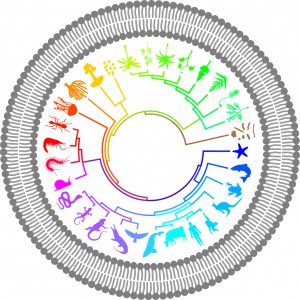
The idea that the whole is greater than the sum of the parts is often used in Gestalt theory to describe human perception. However, this concept of synergy has its place in general biology as well. In a recent BMC Biology article, William Ryu and colleagues describe a novel assay in C elegans whereby monitoring multiple behaviours simultaneously shows that, surprisingly, worm thermosensory behaviour is governed by a variable – but not an increasing – number of genes, depending on the severity of the heat applied.
It is obviously critical for organisms to respond appropriately to adverse environmental conditions. Nematode worms have developed a very characteristic response to excessive heat that reorients them away from the noxious stimulus. In short, when a worm senses heat, it moves backwards, turns and resumes its forward movement in the new direction. Previous studies have characterized the genes by heating up a worm and looking at how a particular aspect of this sequence of movements changes as a function of genetic mutation. In today’s paper, instead of looking at only one response, the authors describe an assay that measures multiple aspects of the worm’s response simultaneously. This delivered the surprising result that unique combinations of molecules define responses to different increases in temperature, rather than that there is a single mechanism that scales with the heat.
The authors have not yet gone for the circuitry behind these variable responses. The next step will be to extract the specific genetic influences active at different temperatures. But now that we are starting to look at things on a systems-level, how many more surprises are in store for us?
Latest posts by Shannon Harper (see all)
- A flick of the tongue and the chemistry of predator-prey interactions - 1st March 2013
- Opening a new can of worms for sensory perception - 1st November 2012
This is interesting and demonstrates the link that stitches together network pharmacology, epigenetics and the functional debate following the ENCODE publication.
The findings of network pharmacology support your last comment about looking at things at the systems level. The relevant systems for function being proteomic systems. This is where genetic changes manifest in terms of what actually drives function.
The fact that genetics change dynamically in response to environmental factors is supported by this work. This can be expected to be iteratively interactive with binding sites in the genome for proteins (as shown in the ENCODE results) meaning proteomic systems feedback to the genome potentially altering genetics which then manifests in changes in the same proteomic system afterwards thereby potentially altering function. This is what you would arguably expect to see as how the environment manifests in detail under Darwinian evolution.
Therefore you get a dynamic relationship between genomics and proteomics but the alterations to function are caused by the changes to the proteomic systems ultimately. This is the nature of the challenge and the research analysis must be able to cope with a systems level view. Traditional methods such as pathway biology cannot do this but thankfully new tools are emerging in the discipline of network pharmacology which can.
This creates for an exciting new step change in this type of research and considerably more could be obtained as result from your ‘can of worms’.